Product pictures
| Amount Per 5 oz | |||
| Calories | 190 Kcal (795 kJ) | ||
| Calories from fat | 108 Kcal | ||
| % Daily Value* | |||
| Total Fat | 12g | 18% | |
|---|---|---|---|
| Saturated Fat | 2g | 10% | |
| Cholesterol | 40mg | 13% | |
| Sodium | 520mg | 22% | |
| Total Carbs | 16g | 5% | |
| Sugars | 2g | 8% | |
| Dietary Fiber | 1g | 4% | |
| Protein | 7g | 14% | |
| Vitamin C | 11.3mg | 19% | |
| Vitamin A | 0.1mg | 4% | |
| Iron | 0.9mg | 5% | |
| Calcium | 40mg | 4% | |
* Percent Daily Values are based on a 2000 calorie diet. Your daily values may be higher or lower depending on your calorie needs.
Find out how many calories should you eat.
Ingredients And Nutrition Overview
Best
choice Good
choice Poor
choice Avoid
it!
choice Good
choice Poor
choice Avoid
it!
-
WeightWatchers Points: 4.6, PointsPlus: 5, SmartPoints: 6
WeightWatchers Points are estimated by carbohydrates, fats, protein and fiber in product. They are not an affirmation of better quality or nutritional value of the product or its manufacturer. Only way to count for dieters. Less points are better.
Read more at Weight watchers diet review -
Keep an eye on the cholesterol.
Today cholesterol is no longer a villain. The 2010's USDA guidelines told us to limit cholesterol from foods
Now experts say cholesterol is "not a nutrient of concern" because cholesterol from foods doesn't cause higher blood cholesterol levels.
Nevertheless try to consume no more than 300 milligrams daily.
This product contains more than 13% of your daily cholesterol intake.
If you still are on a low cholesterol diet, please keep in mind:
- nutritionists are not recommending you go out and binge on cheeseburgers and fries.
- 10% of your daily allowance can quickly become 50% when a hamburger turns into double cheeseburger.
-
Want to lower the cholesterol intake? Here are some advices:
- Try to limit your cheese, dairy and meat intake to one item per meal.
- Avoid meals with multiple sources of cholesterol (chicken with cheese, junk food)
- Try to indclude in your diet low- or nonfat dairy, seafood, legumes and nuts.
- Choose water instead of milk for your coffee.
-
Salty! Has over 22% of the daily sodium max
The average American consumes 5,000 mg of sodium daily — twice the recommended amount amount of 2400mg for healthy adults, this is 1 teaspoon of salt.
For medical reasons many people should not exceed 1500mg of sodium.
Surprisingly, you're responsible for only 15% of the sodium in your diet the bigger part - 75% of the sodium that you consume each day comes from processed foods, not home cooking or the salt shaker.
Excess sodium intake increases the risk of high blood pressure, hypernatremia, hypertension, cardiovascular disease and other heart problems.
Are these reasons enough to cut the sodium intake? No doubt! -
Convert Salt tsps to Sodium mg easily
Salt (NaCl) is not excactly sodium (Na).
It is not right to use these terms as synonyms.
The FDA recommended limit of sodium is 2,300 mg per day (or even less - about 1500 mg while one is on low sodium diets).
This is much less than the weight of salt.
(5,750 mg per day or 3,750 mg for low sodium diet) and not so convenient to calculate.
Know how much sodium is in your salt - without a calculator:
1/4 tsp salt = 600 mg sodium
1/2 tsp salt = 1200 mg sodium
3/4 tsp salt = 1800 mg sodium
1 tsp salt = 2300 mg sodium -
Great! Contains less than 1.5 tsp of sugar.
Great! Contains less than 1.5 tsp of sugar per serving!
-
A good source of protein
For many vegans and vegetarians, it's important to get enough protein.
The product you've just scanned will provide you with 14% or more of your daily protein requirement.
If you're a vegan having trouble meeting your protein needs, try nuts and beans.
Sprinkling nuts onto any dish is a quick, easy and nutritious solution.
Try adding beans in places you might not normally eat them.
Add beans to pasta dishes, stir fries and even salads.
While meat alternatives like Tofu do provide a quick and easy protein intake, they should not be your only source of protein.
Eat proteins from a variety of sources for best results. -
A naturally good source of Vitamin C
You get real, natural easy absorbing Vitamin C from this product, not as a artificial fortified ingredient.
This is great! Let's try to get the best from the real food, because we get too much from artificial ingredients nowdays. -
Learn about veggies and iron
Veggies such as broccoli, bok choy, spinach, parsley and most leafy greens are naturally high in iron.
However, compared to other high-iron foods, like red meat, fish and poultry, the iron in plant foods is not absorbed as easily by the body. What can you do to increase the absorption of iron from these plant foods?
- Vitamin C increases the absorption - so try having a fresh tomato, lemon juice, or an orange together with your high iron food
- Avoid drinking too much coffee - caffeine can decrease the absorption of iron
- In addition to caffeine, the tannins found in tea can also reduce iron absorption
- If you are a vegetarian, try having iron-fortified breakfast cereals, legumes, and eggs
-
Contains MSG!
Monosodium Glutamate is used as a flavor enhancer with an umami taste that intensifies the meaty, savory flavor of food.
Naturally occurring glutamate does it in foods such as stews and meat soups.
Despite the fact that MSG is one of the most extensively studied food ingredients and is generally recognized as safe (GRAS) by FDA.
Some people should steer away from it as they feel that react adversely to MSG.
MSG is generally found in processed, low-quality foods, stuff that you shouldn’t be eating much.
REMEMBER: Any food ingredient listed as hydrolyzed, protein-fortified, ultra-pasteurized, fermented or enzyme-modified is often MSG, or creates free glutamic acid during processing. -
Contains MSG-like ingredients
People feeling reaction to MSG may also react adversely to MSG-like substances.
Glutamates or chemically similar items are added to improve a product's taste.
Here is a short list of common MSG-like substances:
- Yeast extract
- Autolyzed yeast
- Hydrolyzed proteins
- Textured proteins
- Anything "enzyme modified"
-
Product contains sulfites
Sulfites (sulphites) are inorganic salts that are used as antioxidant of food preservative or enhancer.
They may appear on food labels in various forms, such as: sulfur dioxide, potassium bisulfite, potassium metabisulfite, sodium bisulfite, sodium metabisulfite or sodium sulfite
Although sulphites do not cause a true allergic reaction, people with sensitivity to sulfites may experience similar reactions as those with food allergies.
Those who have asthma are most at risk to sulphite sensitivity.
BTW sulfites are included in the ten priority food allergens in Canada. -
Has EDTA, on FDA's toxicity watchlist
Ethylenediaminetetraacetic acid (EDTA) is a chemical added to certain foods and beverages to keep their color and flavor.
EDTA is known as a persistent organic pollutant. It resists degradation from biological, chemical, and photolytic processes.
It may irritate the skin or cause skin rash and even asthma.
It is is generally recognized as safe by FDA, but is on it's list of food additives to be studied for toxicity.
Allergens
Fish Allergy, Gluten Allergy, Wheat Allergy, Corn Allergy, Eggs Allergy, Soy Allergy, Shellfish Allergy, Lactose Allergy, Milk Allergy, Sulfites Allergy
Stuffed crab Ingredients
Imitation Crab Meat (Fish Proteins of Pollock, Whiting, Cod or Japanese Threadfin Bream, Water, Wheat/Corn/Tapioca Starch, Egg Whites, Soybean Oil, Crab Flavor, Natural Crab Extract, Sugar, Salt, Calcium Carbonate, Carmine and Paprika), Bread Crumbs (Bleached Wheat Flour, Soybean Oil, Yeast, Salt, Dextrose, Sugar, Whey, and Monocalcium Phosphate), Mayonnaise (Soybean Oil, Water, Corn Syrup, Food Starch-Modified, Egg Yolk, Distilled Vinegar, Contains Less than 2% Salt, Maltodextrin, Spice, Sodium Benzoate and Potassium Sorbate, Xanthan Gum, Calcium Disodium EDTA, Natural Flavor, Yellow No. 5, Yellow No. 6), Water, Celery, Bell Pepper, Soybean Oil, Onions, Seafood Flavor (Natural Seafood Extract, Natural Seafood Flavor, Hydrolyzed Vegetable Protein, Natural Lemon Flavor Salt, Monosodium Glutamate, Hydrolyzed Corn Gluten, CMC, Xanthan Gum), Lemon Juice (Water, Lemon Juice Concentrate, Citric Acid, Salt, Xanthan Gum, Potassium Sorbate and Sodium Benzoate, Sodium Metabisulfite, Natural and Artificial Flavors, Yellow No. 5), Mustard (Water, Distilled Vinegar, No. 1 Mustard Seed, Salt, Turmeric, Oleoresin Paprika, and Spices), Sugar, Salt, Monosodium Glutamate, Garlic, Hot Sauce (Peppers, Vinegar, Salt), Pepper, Parsley.
You Might Also Like
% RDI of Main Nutrition Facts
10%
of RDI* (190 calories) 141.75 g
-
Cal: 9.5 %
-
Fat: 18.5 %
-
Carb: 5.3 %
-
Prot: 14 %
-
0%25%75%RDI norm*
Calories Breakdown
- Carbs (32%)
- Fat (54%)
- Protein (14%)
Get Your Recipe of Health!
Follow RecipeOfHealth on Facebook!

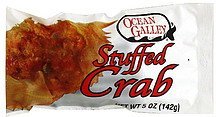

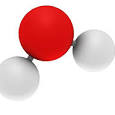
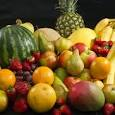
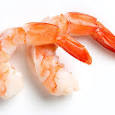
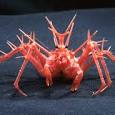
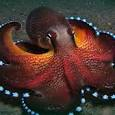
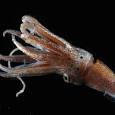
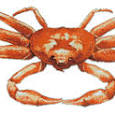

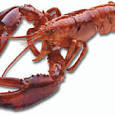
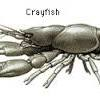
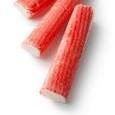











Add your comment